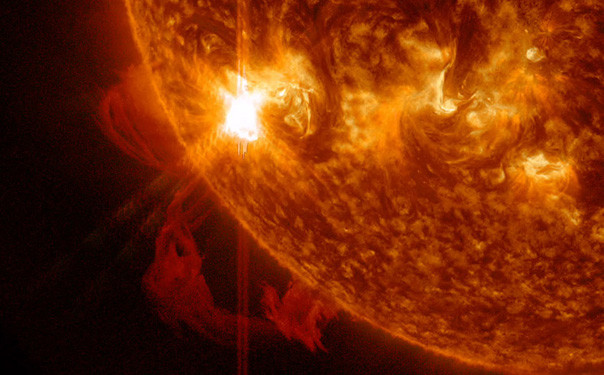Nasa Space Camera Captures Huge Solar Eruption

Nasa's solar observation satellite has filmed a coronal mass ejection, or CME, surging off the side of the sun.
The newest solar observatory captured the phenomenon in great detail. This was the first CME observed by Iris (Interface Region Imaging Spectrograph), which launched in June 2013 on a mission to examine the lowest levels of the sun's atmosphere in higher resolution than ever before.
The video released by Nasa shows how a curtain of solar material erupts outward at speeds of 1.5 million miles per hour.
"We focus in on active regions to try to see a flare or a CME," said Bart De Pontieu, the Iris science lead at Lockheed Martin Solar & Astrophysics Laboratory in Palo Alto, California.
"And then we wait and hope that we'll catch something. This is the first clear CME for Iris so the team is very excited," he said.
The Iris imagery focuses in on material of 30,000 kelvins at the base, or foot points, of the CME. The line moving across the middle of the video is the entrance slit for Iris's spectrograph, an instrument that can split light into its many constituent wavelengths – a technique that ultimately allows scientists to measure temperature, velocity and density of the solar material behind the slit.
The field of view for this imagery is about five Earths wide and about seven-and-a-half Earths tall.
Watch a video of the huge solar eruption
© Copyright IBTimes 2025. All rights reserved.






















